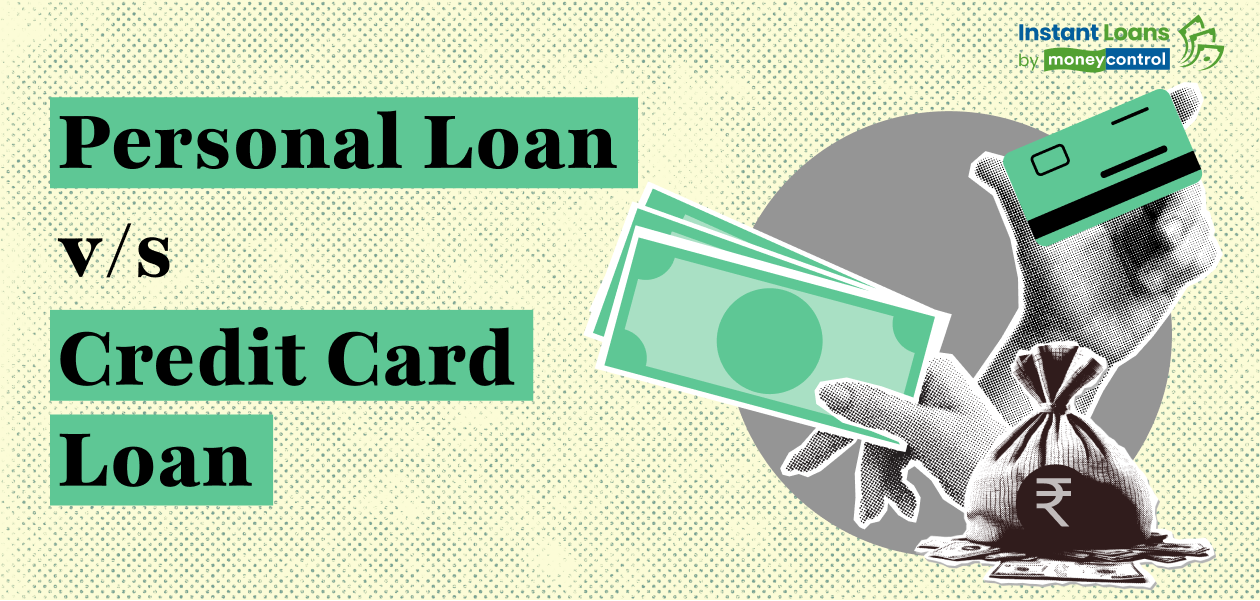Sometimes, life throws unexpected expenses at us. Be it a medical emergency, a big-ticket purchase, or an urgent bill. When savings fall short, borrowing money becomes the next best option.
But with so many choices available, which one should you go for? Two of the most common ways to access quick funds are personal loans and credit card loans. While both can help in times of need, they work differently and come with their own pros and cons. Understanding these differences can help you make the right financial decision.

What is a personal loan? A personal loan is a lump-sum amount borrowed from a bank or financial institution. You can use it for various purposes like medical expenses, education, or a vacation. It comes with flexible repayment terms, and interest rates usually range between 10% and 15%.
Since most personal loans are unsecured, you don’t need to provide any collateral. Repayment is done through fixed monthly installments over a set period. To browse through a wide selection of loans, you can download the Moneycontrol app.
You will find eight lenders providing personal loans of up to Rs 50 lakhs with interest rates starting from 10.5% annually. The online process will save you a lot of time, and there is no requirement to provide collateral.
What is a credit card loan? A credit card loan allows you to borrow money up to a pre-approved limit set by your bank. You can use it for transactions, but you must pay at least the minimum due amount by the monthly due date. If you don’t clear the full outstanding balance, interest is charged on the remaining amount.
Credit card interest rates, also known as the Annual Percentage Rate (APR), are usually above 20%, making it a costlier borrowing option if not repaid on time. Personal loan vs credit card loan Here are some of the key differences between personal loan vs credit card loan: Purpose Credit cards are preferable for day-to-day transactions such as paying the bill at a restaurant, but remember that the merchant must be willing to accept credit card payments. Do keep in mind that it is in your best interest to keep the credit utilisation ratio below 30% as it has a positive effect on your credit report.
Personal loans are preferable for large, one-time financing needs such as renovating your home. The lump-sum amount is disbursed immediately to your bank account, and you can use it as per requirement. Interest rates The APR for credit cards is quite high and can reach 45%.
The interest rate for credit cards is usually calculated at a flat rate. It leads to the same interest amount for each EMI irrespective of the principal amount. Personal loans have lower interest rates, typically ranging from 10% to 22%.
The applicant’s credit score and the loan amount are important for determining the interest rate. Documentation Since a credit card loan is a pre-approved loan, you don’t need to submit any documents to get it. If you are applying for a credit card, then you need to submit documents such as a PAN card and ID proof.
For personal loans, you need to submit KYC documents along with bank statements, salary slips, IT returns, etc. Tenure The repayment period for credit cards is short and usually lies between 30 to 45 days. This makes it suitable for smaller expenditures and short-term emergencies.
Personal loans have much longer repayment periods, usually ranging from one year to five years or more. Loan amount With a credit card, you can spend up to a fixed limit called the credit limit. For example, if the credit limit is fixed at Rs 90,000, then that’s the maximum expenditure you can do with the credit card.
Personal loans are suited to much larger expenditures. The loan amount can be significantly higher than what you can get on your credit card. Charges Credit cards come with charges such as annual percentage rates, cash withdrawal fees, foreign exchange costs, late fees, etc.
Charges on personal loans include processing fees, prepayment penalties, and late fees. Usually these charges are less for personal loans than credit cards. Funds disbursement When you use a credit card, the payment is made to the merchant or seller, and the amount is added to your credit card bill as debt.
Personal loans are disbursed in a lump-sum manner. The lender transfers the amount to the borrower’s account. Get Instant Loan Up To Rs.
50L Conclusion To conclude, both personal loans and credit card loans have unique advantages. You need to figure out which suits you the best as per your needs. If you want a personal loan, you could visit your preferred bank’s website or download the Moneycontrol app to fill up the loan application form.
Once you submit the necessary documents, the lender will verify the information. It can take a few days, and upon approval, the loan amount will be transferred to your bank account. You can borrow up to Rs 50 lakhs from eight lenders through Moneycontrol.
The loans start at an affordable interest rate of 10.5% per annum..
Politics

Personal Loan vs Credit Card Loan: Interest rates to hidden charges, important factors to check before borrowing
















